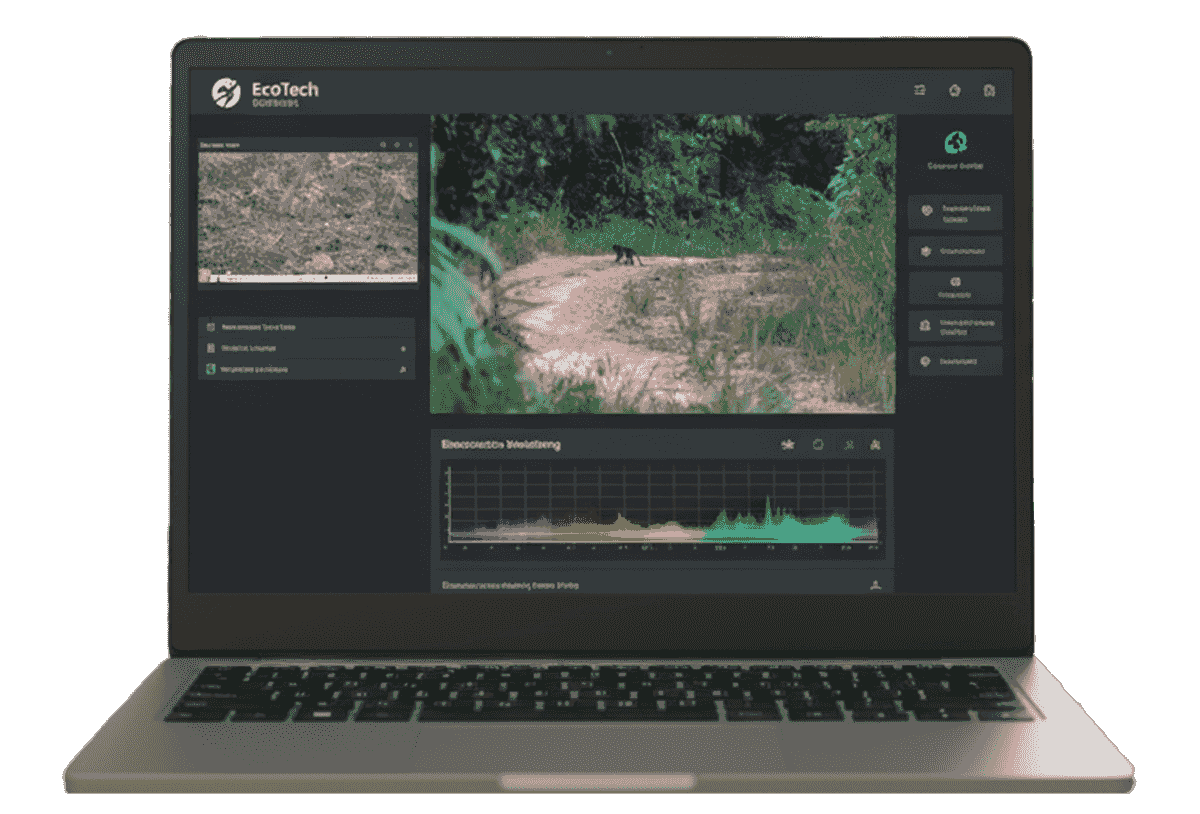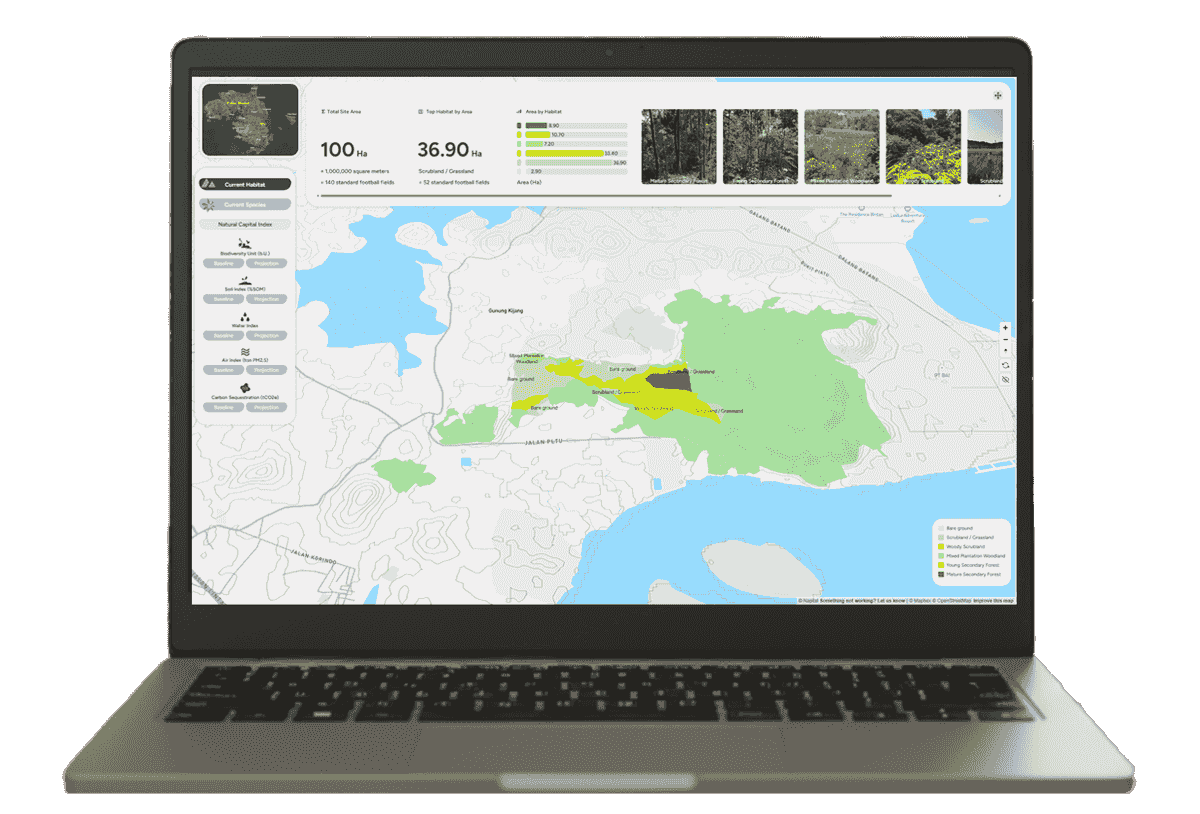
The Natural Capital Initiative
A scientifically driven approach to restoring nature and improving ecosystem performance that drives natural capital gain
In Collaboration with AECOM Asia Co., Ltd.

What is Natural Capital?
Natural capital refers to the stocks of natural assets, including geology, soil, air, water, and all living things. This capital provides humans with a wide range of ecosystem services that are essential for our survival and well-being.
What is the Natural Capital Initiative?
The Natural Capital Initiative stands as a pioneering strategy project that integrates conservation, environmental engineering, and business incentives to revitalize ecosystems and their services. This innovative approach aims to restore environmental balance while enhancing multiple aspects of environmental performance. By mapping the holistic profile of a land's natural capital, this initiative seeks to elevate its intrinsic value, transforming it into a tangible financial asset.
Through a blend of ecological stewardship and economic foresight, the Natural Capital Initiative not only safeguards our planet's biodiversity but also presents a sustainable model for increasing land value through the preservation and enhancement of our natural heritage.
The 5 Key Performance Indicator
Natural Capital Index
1Biodiversity Unit
bU
the numerical values of habitats
2Soil Index
%SOM
the health of soils
3Water Index
%TSS↓ & Runoff Control
the contribution of ecosystems to local water management
4Air Index
ton PM2.5
the improvement of air quality
5Carbon Sequestration
tCO2e
the ability of ecosystems to absorb and store carbon
Present Gain, Progress and Potential
These metrics are selected as representative of core ecosystem services and are essential for assessing the health and performance of ecosystems

Biodiversity
Measures the variety and variability of life forms within a given ecosystem using contemporary nature tech approaches, acknowledging that biodiversity largely underpins ecosystem functioning and resilience

Soil Index
Focuses on the health of soils, which is essential for resilient ecosystems. It tracks recovery through two measures: the percentage of Soil Organic Matter (%SOM) and microbial diversity. Higher %SOM content indicates better soil quality, while diverse microbial communities are essential for healthy soil.

Water Index
Measures the contribution of ecosystems to local water management. Healthy ecosystems help to attenuate flooding by retaining stormwater run-off, and they also reduce sediment loading by managing soil erosion. The index estimates the reduction of stormwater run-off and sediment loading resulting from ecosystem restoration.

Air Index
Measures the ecosystem's ability to improve air quality by reducing airborne pollutants. The potential for pollutant removal is estimated using models that consider local climate, vegetation types and leaf area index.

Carbon Sequestration
Evaluates the ability of ecosystems to absorb and store carbon, which is vital for regulating climate. It can be measured through direct assessments of carbon content in biomass and soils or estimated based on habitat types/age and typical sequestration rates.
Digital Monitoring and Data Display

Digital Monitoring
The monitoring process involves establishing a comprehensive data collection system that uses tools such as camera traps, bioacoustics, and environmental DNA (eDNA) analysis. This approach ensures thorough and accurate data collection that can easily be scaled across large landscapes, and displayed through our user-friendly, digital dashboard.

Data Display
The gathered data under visualization, allowing stakeholders to track the progress of the site effectively. This presentation aims to engage non-scientists, generate support, receive feedback, and educate the public. Through the incorporation of technology, to foster transparency and accountability, encourage broader participation in conservation efforts.
Business Incentive & Potentials
Empowering Business Through Sustainability: Elevate Brand, Meet ESG Goals, and Protect Our Planet

ESG Reporting and Participation
Improve business ESG performance and reporting, and help corporates to actively participating in conservation efforts,
Enhance business sustainability profiles, meet regulatory requirements, and demonstrate commitment to environmental stewardship.

Social Value Investment
Create opportunities for impact investments, enabling businesses to direct capital toward projects that yield both financial returns and positive environmental outcomes. This alignment of profit with purpose attracts socially-conscious investors looking to support sustainable development.

Branding and Partnerships
Collaborate and enhance brand reputation and visibility. By associating with our pioneering project that prioritizes ecological balance, helps companies to forge strategic partnerships that amplify sustainability messaging and open new avenues for commercial collaboration.

Customer & Audience Engagement
Inspire innovative product offerings, such as conservation-themed merchandise or eco-friendly brand products and services.
Create appeadling and environmentally-conscious These engagement campaign, contribute to rewarding conservation efforts.
By integrating business incentives, to position companies to thrive in the increasingly sustainability-driven market.

Strategic Restoration and Nature Investment












